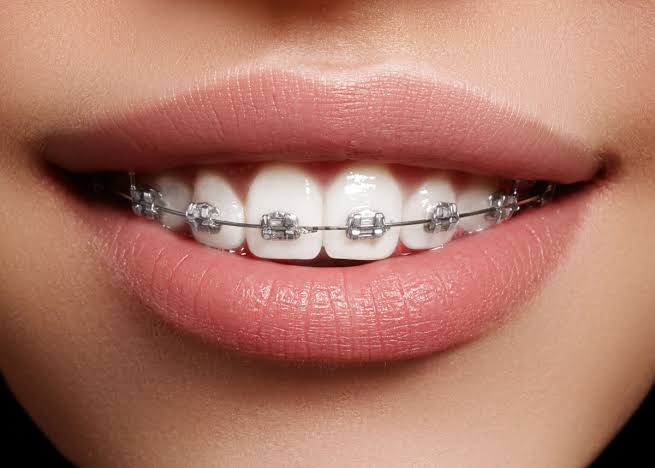Orthodontic braces can transform a smile, but understanding their cost is crucial for anyone considering treatment. Prices vary widely based on factors like the type of braces and the length of treatment. This article breaks down the costs involved and explores financing options, helping readers make informed decisions about their orthodontic journey.
Key Takeaways
- Understanding Cost Variability: The cost of orthodontic braces varies significantly based on type, treatment duration, and case complexity, influencing overall expenses between $2,000 and $8,000.
- Types of Braces and Costs: Traditional metal braces are the most economical option ($2,000 – $5,000), while ceramic ($2,500 – $6,000), lingual ($4,000 – $8,000), and clear aligners ($3,000 – $6,500) offer varying aesthetics and costs.
- Duration of Treatment: Typical treatment lengths range from 18 months to three years, with longer durations leading to increased costs due to ongoing adjustments and visits.
- Orthodontist Expertise Matters: The experience and location of the orthodontist can significantly impact treatment costs, with urban areas often charging a premium for services.
- Financing Options Available: Patients can explore insurance coverage (often covering 25-50% of costs) and flexible payment plans to make the treatment more financially manageable.
- Consultation Is Key: A thorough consultation with a qualified orthodontist is essential for personalized cost estimates and treatment planning based on individual needs.
Overview Of Orthodontic Braces
Orthodontic braces, offered by Radiant Smiles Dental Care, correct dental alignment and improve overall oral health. Braces consist of brackets, wires and bands that apply pressure to teeth over time, shifting them into appropriate positions and addressing issues like overcrowding, gaps and bite problems.
Different types of braces exist, including traditional metal, ceramic, lingual and clear aligners. Each type varies in price, aesthetics, and treatment duration. For instance, traditional metal braces often cost between $2,000 and $5,000, while ceramic braces might range from $2,500 to $6,000, depending on the specific case.
The duration of treatment typically spans from 18 months to 3 years. Patient compliance with wear instructions plays a crucial role in treatment efficiency. Factors like the severity of the dental issue, age, and type of braces significantly influence treatment time and costs.
Patients considering orthodontic braces benefit from consultations with qualified orthodontists. Orthodontic assessments include diagnostic imaging, treatment planning, and cost estimates, ensuring tailored solutions for individual needs.
Factors Influencing Cost
Several key elements influence the cost of orthodontic braces. Understanding these can help individuals anticipate expenses and make informed decisions.
Type Of Braces
The type of braces selected significantly affects the overall cost. Traditional metal braces remain the most economical option, typically ranging from $2,000 to $5,000. Ceramic braces offer a more aesthetic choice but increase the price, usually between $2,500 and $6,000. Lingual braces and clear aligners, while discreet, often come with higher costs ranging from $3,000 to $8,000. Each option presents different advantages, such as visibility and comfort, impacting patient preference and budget.
Duration Of Treatment
The duration of the orthodontic treatment directly correlates with the associated costs. Standard treatment durations range from 18 months to three years, depending on the severity of the dental issues. Longer treatment times can lead to increased overall costs due to ongoing visits and adjustments required throughout the process. Careful assessment of individual cases guides estimates on duration and resulting expenses.
Orthodontist’s Expertise
The expertise of the orthodontist plays a crucial role in determining costs. Highly experienced practitioners may charge higher fees reflective of their qualifications and successful track record. Regions also matter; services in urban areas often carry premium prices compared to rural locations. Choosing an orthodontist with the right qualifications and reputation ensures effective treatment but may influence overall financial outlay.
Average Cost Breakdown
Understanding the average costs associated with different types of orthodontic braces aids in making informed decisions.
Traditional Metal Braces
Traditional metal braces typically range from $2,000 to $5,000. This cost variation depends on treatment length and specific orthodontic needs. Maintenance expenses occur, including periodic adjustments, which also contribute to the overall expenditure. Traditional braces remain the most cost-effective option among all types of braces.
Ceramic Braces
Ceramic braces generally range from $2,500 to $6,000. Although they resemble natural teeth, they often come with higher costs due to the materials used. Like traditional braces, ongoing maintenance and adjustments influence the final price. Patients appreciate the aesthetic appeal of ceramic braces, which may justify the additional expense for some.
Lingual Braces
Lingual braces, fixed to the back of the teeth for discreet treatment, typically start at $4,000 and can go up to $8,000. The higher costs reflect the complexity of installation and adjustments required, as well as the specialized training of orthodontists. Lingual braces tend to be the most expensive option, appealing to those seeking effective treatment without visible brackets.
Clear Aligners
Clear aligners usually range from $3,000 to $6,500, varying based on the specific treatment plan and duration. They provide a subtle alternative to traditional braces, appealing to adults and teens alike. Costs may increase depending on the number of aligners required during the treatment process and any necessary follow-up visits.
Financing Options
Understanding financing options helps individuals manage the costs associated with orthodontic braces. Several choices exist to facilitate payments and make treatment more accessible.
Insurance Coverage
Many dental insurance plans cover a portion of orthodontic treatments. Coverage levels vary significantly, often ranging from 25% to 50% of total costs. Typically, insurance plans have a lifetime maximum for orthodontics, which may limit total reimbursements to $1,000 to $3,000. Patients should review their specific policy details and consult with their provider to obtain clarity on coverage, exclusions, and applicable deductibles.
Payment Plans
Most orthodontic practices offer flexible payment plans to accommodate patient needs. Options include monthly payments that can stretch across the treatment duration, generally between 12 to 24 months. Some orthodontists may accept no-interest financing or charge minimal interest on extended payment plans. It’s beneficial for patients to inquire about upfront costs, any initiation fees, and potential discounts for full payments made at the start of treatment.
Conclusion
Understanding the costs of orthodontic braces is crucial for anyone considering treatment. The investment in a healthier smile can vary widely based on the type of braces and individual circumstances. With options ranging from traditional metal to clear aligners there’s a suitable choice for every budget and aesthetic preference.
Exploring financing options can ease the financial burden making treatment more accessible. Consulting with a qualified orthodontist provides an opportunity to receive personalized advice and accurate cost estimates tailored to specific needs. Ultimately the journey to a confident smile starts with informed decisions about orthodontic care.






